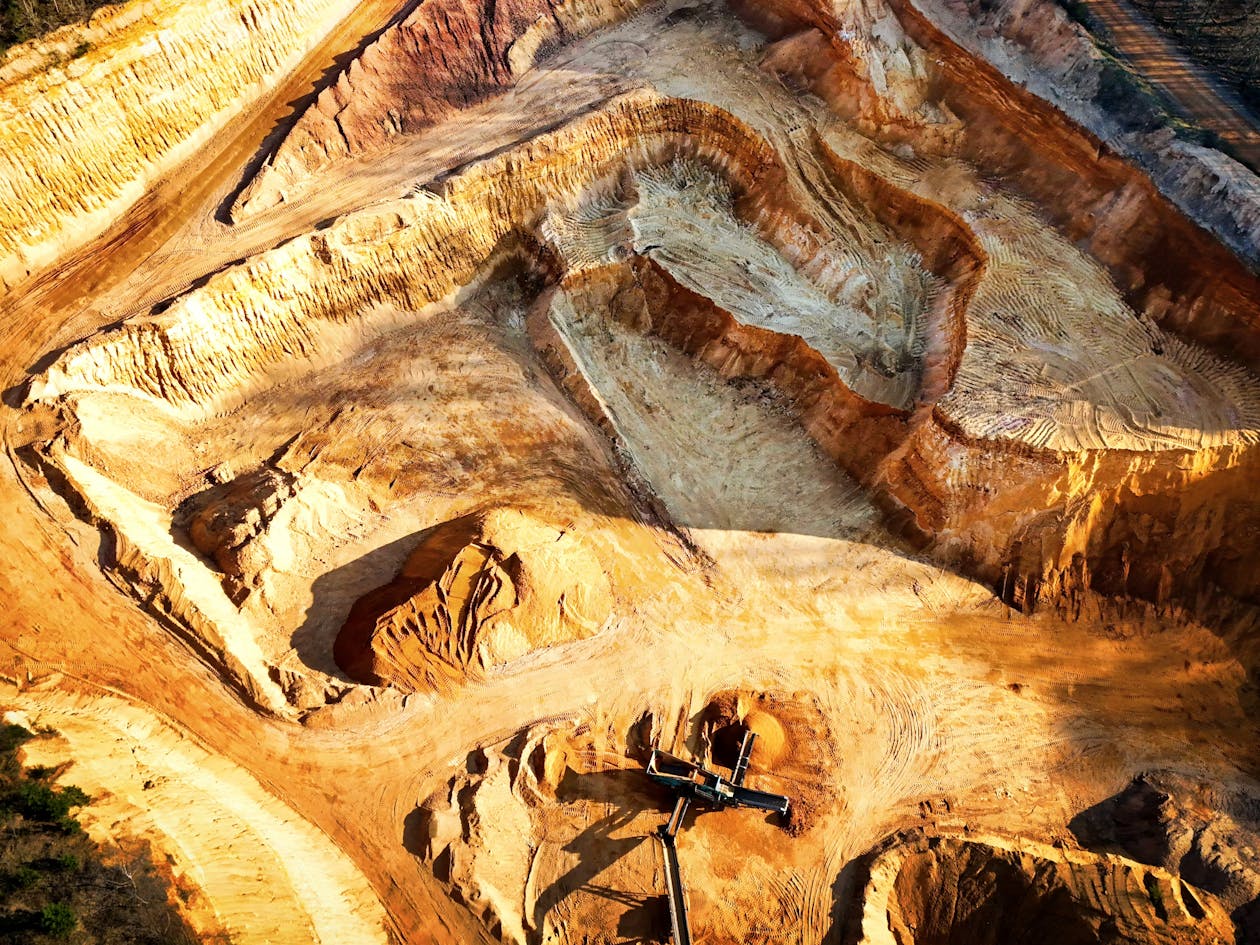The high desert along the Oregon-Nevada border has kept a secret for 16 million years. Beneath the sagebrush and volcanic rock lies something that could transform America’s energy future—and spark one of the most contentious environmental battles of our time. Scientists have confirmed what might be the largest lithium deposit ever discovered in the United States, with estimates suggesting it could be worth a staggering $1.5 trillion.
This isn’t just another mining story. It’s about an ancient volcanic caldera that accidentally created the perfect conditions for storing the one element everyone suddenly needs. As electric vehicles surge in popularity and the world scrambles for battery materials, this remote corner of the American West has become a focal point for a collision between green energy dreams and environmental reality.
The numbers alone are staggering: between 20 and 40 million metric tons of lithium trapped in clay beneath the McDermitt Caldera. However, those celebrating America’s potential lithium independence might want to hold off on the champagne. The same land that holds this treasure also supports endangered wildlife, provides sacred sites for Indigenous tribes, and sustains communities that aren’t sure they want to trade their quiet desert life for an industrial revolution.
The Ancient Volcano That Could Power America’s Electric Future
The McDermitt Caldera tells a story written in volcanic ash and time. Sixteen million years ago, massive eruptions created a 28-mile-wide basin straddling what would eventually become the Oregon-Nevada state line. As the volcanic activity subsided, a remarkable event occurred. The caldera became a closed basin—essentially a giant bowl with no outlet to the sea.
Over millions of years, this bowl collected volcanic sediments rich in lithium. Rain and groundwater couldn’t escape, creating a unique chemical environment that concentrated lithium in clay minerals. Layer after layer of ash and sediment built up, trapping more lithium with each passing millennium. What nature created through patient geological processes, humans now desperately want to extract in a matter of years.
“This feature is 16 million years old, and we’re making decisions in a matter of years,” said Sammy Castonguay, a geologist at Treasure Valley Community College. His observation cuts to the heart of the dilemma—geological time versus human urgency.
The volcanic origins make this deposit special. Unlike lithium extracted from salt flats in South America or hard rock mining in Australia, the McDermitt lithium exists in clay minerals formed through ancient volcanic processes. These clays, with exotic names like hectorite and illite, hold lithium in their molecular structure, waiting to be unlocked by modern chemistry.
Why They’re Calling It the New Gold Rush (Except It’s White)

Lithium has earned its “white gold” nickname through simple economics. A decade ago, lithium carbonate sold for around $5,000 per ton. Today, prices have soared as high as $80,000 per ton during peak demand. With electric vehicle sales exploding and every major automaker pledging an electric future, lithium has become the oil of the 21st century.
The estimated value of the McDermitt deposit, at $1.5 trillion, is based on current market prices and the successful extraction of the resource. Even conservative estimates suggesting 20 million metric tons would make this one of the world’s most significant lithium resources. For context, the entire planet currently produces about 100,000 metric tons of lithium annually. This single deposit could supply decades of global demand.
But calling it “white gold” captures more than just its color and value. Like the gold rushes of the past, lithium has triggered a modern prospecting boom. HiTech Minerals Inc. has already proposed adding roads and hundreds of test wells across Malheur County. Other companies are circling, sensing opportunity in the desert dust.
The stakes extend beyond corporate profits. Currently, the United States imports most of its lithium, creating a strategic vulnerability in the race toward electrification. A domestic source of this magnitude could flip the script, positioning the United States as a major player in the global battery supply chain rather than a dependent customer.
Small Town, Big Dreams, Bigger Worries

Malheur County knows hardship intimately. As one of Oregon’s poorest counties, it has watched young people leave for opportunities elsewhere while traditional industries like ranching struggle to survive. The lithium discovery dangles a different future—one with jobs, investment, and economic revival.
“We need to do this the Oregon way – with full accountability and shared benefits,” said Greg Smith, director of economic development in Malheur County. His careful phrasing reveals the tightrope local officials must walk between desperation for economic growth and fear of being exploited.
The promise of transformation is real. Mining operations require a diverse range of workers, from geologists to heavy equipment operators. Processing facilities need technicians and engineers. Support businesses, from restaurants to housing, could flourish. For a region where good jobs are scarce, the lithium boom offers hope.
Yet that hope comes tinged with anxiety. Locals have seen boom-and-bust cycles before. They’ve watched as outside companies extracted resources and profits while leaving environmental damage and broken promises in their wake. The question haunting community meetings isn’t whether lithium mining will bring change—it’s whether locals will have any real say in shaping that change.
Small-town residents find themselves thrust into global conversations about climate change and clean energy. Their backyard has become a potential solution to reducing carbon emissions worldwide. But they’re the ones who will live with whatever consequences unfold, long after the headlines fade and the mining executives return to distant boardrooms.
Wildlife vs. White Gold: The Desert Showdown

The high desert may appear empty to casual observers, but it pulses with life that has adapted to harsh conditions. Pronghorn antelope, North America’s fastest land animal, depend on these wide-open spaces for their annual migrations. Greater sage-grouse, already struggling with habitat loss, perform their elaborate mating dances on grounds that have remained unchanged for centuries.
The Oregon Chapter of the Sierra Club finds itself in an uncomfortable position. The organization supports clean energy and recognizes the importance of lithium for electric vehicles. Yet they’ve joined the chorus of concern about drilling in fragile habitats. This isn’t simple environmental opposition—it’s about finding a balance between different ecological goods.
Water poses the biggest challenge. Mining and processing lithium from clay requires significant water resources in a region where every drop counts. Traditional mining methods could involve acid leaching, raising fears about groundwater contamination. Desert aquifers recharge slowly; damage could last generations.
Indigenous tribes add another dimension to the controversy. These lands hold cultural and spiritual significance that predates any mineral valuation. Tribal leaders from nearby reservations have contested similar projects, pointing to sacred sites and traditional gathering areas. Their opposition stems not just from environmental concerns but from a fundamentally different relationship with the land.
The Lahontan cutthroat trout, found nowhere else on Earth, symbolizes what’s at stake. These ancient fish survived ice ages and volcanic eruptions, adapting to desert streams and alkaline lakes. Now they face a threat their evolution didn’t prepare them for: industrial-scale resource extraction in their last remaining strongholds.
From Volcanic Ash to Electric Cars: How It Works

Extracting lithium from clay presents unique technical challenges. Unlike the relatively straightforward process of pumping lithium-rich brine from salt flats, liberating lithium from volcanic clay requires breaking strong chemical bonds formed over millions of years.
The proposed extraction method involves mining the clay-rich sediments and processing them using acid leaching. Sulfuric acid or other chemicals break down the clay minerals, releasing lithium into solution. From there, various chemical processes concentrate and purify the lithium, eventually producing battery-grade lithium carbonate or hydroxide.
This complexity explains why the McDermitt deposit remained unexploited despite being discovered in the 1970s. Only recent advances in processing technology and skyrocketing lithium prices have made extraction economically feasible. What seemed like an impossible challenge a decade ago now appears to be a technical problem with a profitable solution.
The environmental footprint of clay processing exceeds that of brine operations. Each ton of finished lithium product may require the movement and processing of hundreds of tons of clay. The waste material, stripped of lithium but potentially containing residual processing chemicals, must be stored indefinitely. In the delicate desert ecosystem, finding suitable disposal sites presents another challenge.
Energy requirements add another wrinkle. Processing clay into battery-grade lithium demands significant power, potentially undermining the climate benefits of electric vehicles if that energy comes from fossil fuels. Developers promise to use renewable energy, but details remain vague. The irony of using coal power to produce batteries for zero-emission vehicles hasn’t escaped critics.
The Race Is On: Who Gets Rich and Who Gets Left Behind
The Bureau of Land Management faced criticism for offering only a brief window for public comment on initial drilling proposals. This rushed timeline reflects the urgency driving lithium development but also raises questions about democratic participation in decisions affecting public lands.
Mining companies emphasize their commitment to following federal standards and incorporating community feedback. They point to modern mining techniques that minimize environmental impact and promise to restore disturbed areas. Industry representatives stress that American environmental regulations far exceed those in many lithium-producing countries, making domestic production potentially cleaner overall.
Yet friction persists over whether corporate outreach represents genuine engagement or mere box-checking. Some community members report feeling like decisions have already been made, with public input serving as window dressing rather than meaningful participation. This skepticism stems partly from the mining industry’s historical record in the American West.
The global implications extend beyond local concerns. Every ton of lithium extracted from McDermitt potentially reduces dependence on supplies from China, which currently dominates the lithium processing industry. Geopolitical considerations add urgency to development timelines, with national security arguments sometimes overshadowing environmental caution.















Leave a Reply